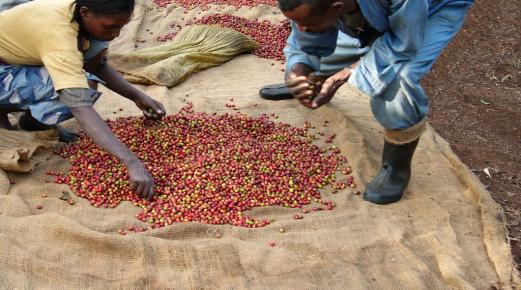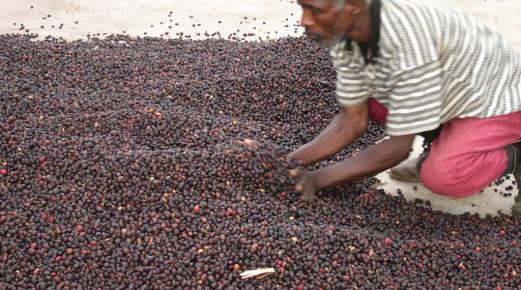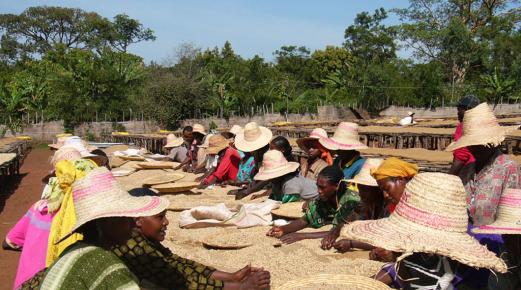VARIETIES AND CULTIVATION
 Coffee plants grow in the band between 25° latitude north and 25° latitude south, where the temperature, sunlight and nature of the soil are ideal for their growth. The beans are removed from the green berries once they have ripened to a bright cherry red.
Coffee plants grow in the band between 25° latitude north and 25° latitude south, where the temperature, sunlight and nature of the soil are ideal for their growth. The beans are removed from the green berries once they have ripened to a bright cherry red.
They are then dried in the sun. Of the 60 species of coffee, only 25 are used commercially or their fruit. Of these, four hold the top positions for coffee bean commerce: Coffea Liberica and Coffea Excelsa, as well as the most common and more important Coffea Arabica and Coffea Robusta.
While in the same botanical family, these two species have different properties which define completely different flavors.
 The Arabica variety is qualitatively better and represents about 70 percent of the worlds production.
The Arabica variety is qualitatively better and represents about 70 percent of the worlds production.
Its beans are small and long, with an intense aromatic perfume and a characteristic copper green color. Arabica plants grow well in high-mineral soils, especially those of volcanic origin, over 600 m above sea level.
The idea climate should have an average temperature of 20 °C so that the berries ripen slowly, developing what once roasted will become sweet smooth flavors. Similar to Coffea Arabica, the Robusta variety has branches that curve downwards, forming an umbrella. It flowers three times a year.
 Its irregular round yellow-green beans are smaller than those of the previous variety and contain more caffeine. Once roasted, these gives rise to a sharp bitter flavor.
Its irregular round yellow-green beans are smaller than those of the previous variety and contain more caffeine. Once roasted, these gives rise to a sharp bitter flavor.
There are two systems for processing raw coffee: dry or washed. In dry processing, or “natural coffee”, the fresh picked berries dried under the sun.
In washed coffee, the pulp is removed by washing in special fermentation vats and then dried under the sun with only the parchment, the very last layer, protecting the bean.

